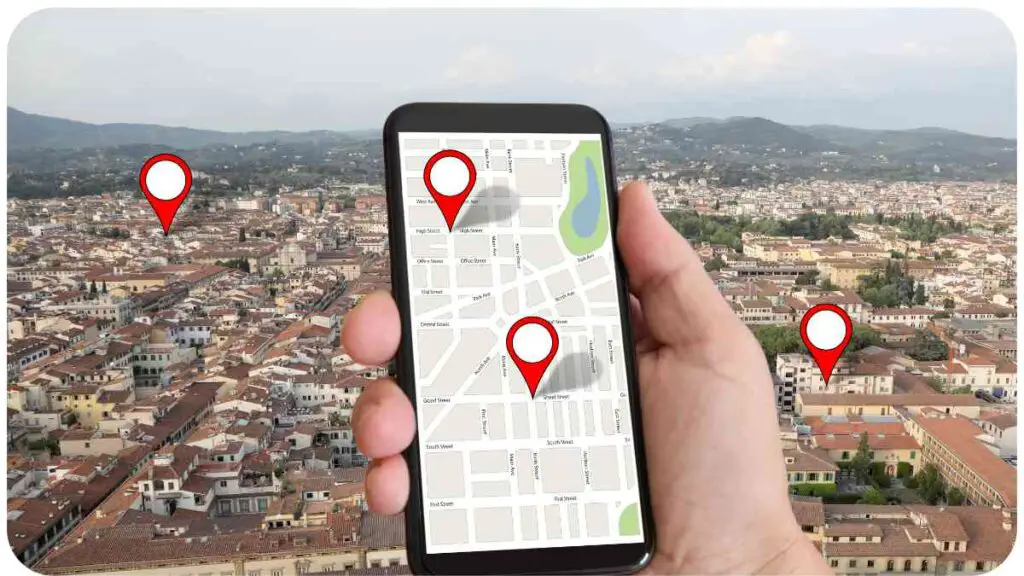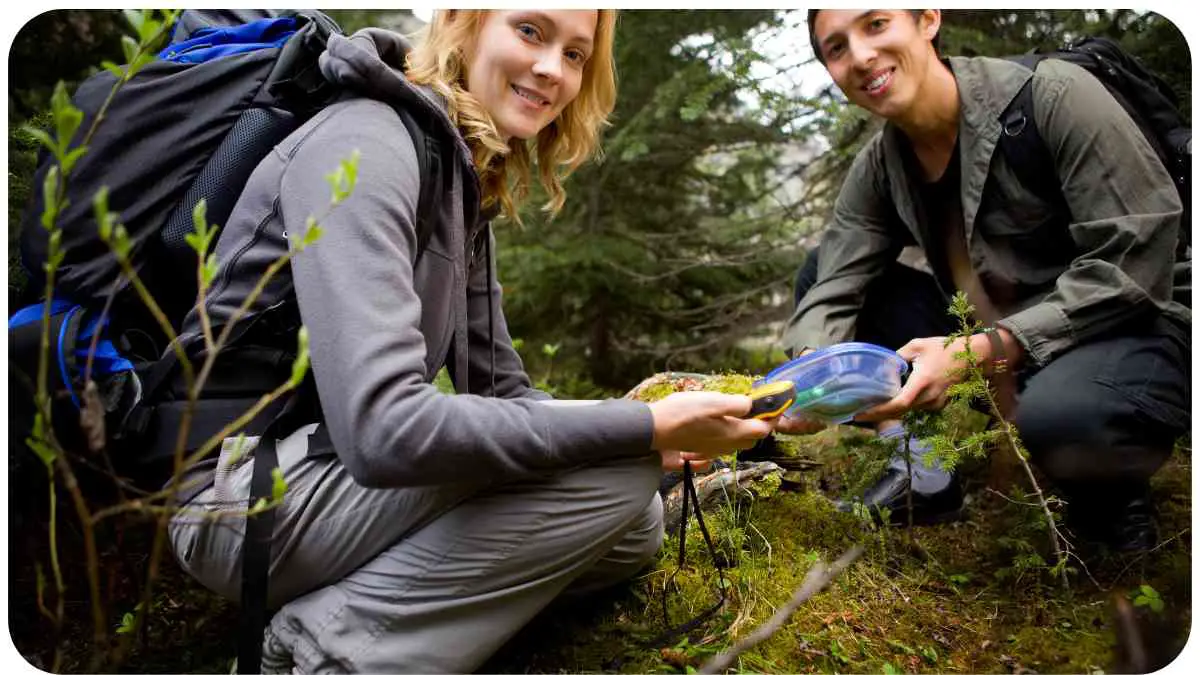Welcome to the world of treasure hunting! Embarking on a treasure hunt utilizing GPS technology can be an exciting and engaging experience for people of all ages. With the help of GPS devices, you can transform a simple outdoor adventure into a thrilling search for hidden treasures.
In this step-by-step guide, we will explore the various aspects of using GPS in your treasure hunt and provide you with valuable insights and tips to ensure a successful and enjoyable experience.
| Takeaway |
|---|
| GPS-based treasure hunts can be a thrilling and engaging activity for people of all ages. |
| Creating captivating clues and riddles using elements of the environment adds excitement to the hunt. |
| Gather the necessary equipment, including GPS devices, maps, and pens, to ensure a successful treasure hunt. |
| Hiding treasures strategically and considering environmental factors enhances the adventure. |
| Troubleshoot challenges such as GPS signal loss, battery life, and technical issues as they arise. |
2. Getting Started
2.1 What is GPS?

GPS stands for Global Positioning System. It is a satellite-based navigation system that allows users to determine their precise location anywhere on Earth. GPS devices receive signals from multiple satellites, enabling them to calculate accurate coordinates and provide real-time positioning information.
These devices are widely used in various applications, including navigation, tracking, and recreational activities like treasure hunting.
Embarking on an adventurous journey outdoors? Discover Geocaching: The Perfect Outdoor Adventure for the entire family. Not only does it merge technology with exploration, but it also promotes bonding through the hunt.
2.2 Types of GPS Devices
When it comes to treasure hunting, different types of GPS devices are available to choose from. The most common ones include handheld GPS devices, smartphones with GPS capabilities, and GPS-enabled smartwatches.
Handheld devices offer a dedicated interface for navigation and usually have features specifically designed for outdoor activities. Smartphones provide convenience with their multifunctional capabilities, while GPS-enabled smartwatches offer a wearable and compact option for navigation on the go.
Table: Comparison of GPS Devices
| Device | Pros | Cons |
| Handheld GPS | Dedicated interface, outdoor features | Bulkier, separate device to carry |
| Smartphone | Convenience, multiple functionalities | Limited battery life, screen visibility |
| GPS Smartwatch | Wearable, compact design | Limited screen size, fewer functionalities |
3. Planning Your Treasure Hunt
Before diving into the treasure hunt, it’s essential to plan and organize every aspect of the adventure. This planning phase ensures a smooth experience and maximizes the enjoyment for all participants.
If you’ve been eager to dive into the world of geocaching but are unsure where to start, consult the Ultimate Guide to Geocaching for Beginners. This guide breaks down the essentials, ensuring your first hunt is a memorable one.
3.1 Choosing the Location
The first step in planning your treasure hunt is determining the location. Consider the age and interests of the participants to choose an appropriate setting. It could be a local park, a nature trail, or even your backyard. Make sure the location provides enough space for exploration and has varying terrains to add some excitement to the hunt.
Table: Recommended Locations for Treasure Hunts
| Location | Description |
| Local Park | Ideal for family-friendly hunts with easy access and facilities nearby |
| Nature Trail | Perfect for adventurers who enjoy exploring forests and natural landscapes |
| Backyard | A convenient option for small-scale hunts and intimate gatherings |
3.2 Determining the Duration
Decide on the duration of your treasure hunt based on the complexity of the clues, the age of the participants, and the size of the area to be covered. For a shorter adventure, consider setting a time limit and adding more challenging clues. Longer hunts can span over a few hours or even a full day for a more immersive experience.
3.3 Setting the Difficulty Level
Consider the skill level and experience of the participants when setting the difficulty level of your treasure hunt. For younger kids or beginners, keep the clues simple and the hiding spots more accessible.
As the age and experience of the participants increase, you can introduce more challenging riddles and locations. Striking the right balance between difficulty and enjoyment ensures everyone has a great time.
A road trip combined with the excitement of geocaching? Absolutely! Learn how to marry these two exhilarating experiences by Planning the Perfect Geocaching Road Trip. Let technology guide your travels, and experience the thrill of discovery.
4. Gathering Your Equipment
To ensure a successful treasure hunt, it’s crucial to gather all the necessary equipment before venturing out. Here are some essential items you’ll need:
4.1 GPS Device
Choose a GPS device that suits your needs and preferences. Look for devices with an easy-to-use interface, clear display, and reliable satellite reception. Ensure that your device has accurate mapping capabilities and the ability to mark and save waypoints for navigation.
Table: Recommended GPS Devices
| Brand | Model | Pros |
| Garmin | eTrex 10 | Simple and affordable device perfect for beginners and casual treasure hunting |
| Magellan | eXplorist 310 | Rugged and durable GPS device with excellent battery life, ideal for outdoor use |
| Garmin | GPSMAP 64sx | Advanced features, including wireless connectivity and preloaded maps for easy navigation |
4.2 Maps and Compass
While GPS devices provide accurate navigation, it’s always wise to carry physical maps of the area as a backup.
Familiarize yourself with the maps and use them to plan your route. Additionally, having a compass handy can assist you in orienting yourself and finding hidden treasures, especially in areas with limited GPS coverage.
4.3 Pens and Paper

Don’t forget to carry pens or markers and paper to jot down clues, mark waypoints, or solve riddles along the way. Having these supplies will help you stay organized and engaged throughout the treasure hunt.
4.4 Optional Equipment
Depending on the nature of your treasure hunt and the challenges you’ve designed, you may consider bringing some optional equipment. This could include a digital camera to document the adventure, a small first aid kit for any mishaps, and even disguises or costumes to make the experience more fun and memorable.
Ever wondered how technology can elevate your treasure hunting experience? Dive into Using Google Maps for Treasure Hunting, and unveil techniques to turn your regular map app into a hunting compass.
5. Creating Your Treasure Map
Creating a well-designed and visually appealing treasure map adds an element of excitement to your hunt. Here’s how you can create an engaging treasure map:
5.1 Plotting the Start and End Points
Mark the starting point and the final treasure location on your map. This creates a sense of anticipation and provides a clear objective for the participants. Use distinct symbols or images to represent these points and make them easily distinguishable.
Table: Map Symbols
| Symbol | Description |
| X | Starting Point |
| * | Treasure Location |
| @ | Checkpoint or Rest Area |
5.2 Marking the Hidden Treasures
Designate the hidden treasure locations on your map. You can use symbols such as dollar signs or treasure chests. Indicate the order in which the treasures are hidden using numbers or arrows on the map. This helps keep track of the progress and adds a layer of challenge to the hunt.
Table: Hidden Treasure Locations
| Hidden Treasure | Description |
| Treasure 1 | Buried underneath a tree |
| Treasure 2 | Hidden inside a hollow log |
| Treasure 3 | Camouflaged behind a rock |
Remember to make your treasure map visually appealing by using colors, illustrations, or even personalized drawings. This not only enhances the overall experience but also adds to the excitement of the hunt.
6. Enticing Clues and Riddles
Clues and riddles play a crucial role in engaging participants and leading them to the hidden treasures. Craft creative clues and design challenging riddles to make the treasure hunt more exciting. Here’s how you can create enticing clues:
Treasure hunting is undeniably exciting, but the legal hurdles can be tricky. Before setting out, it’s crucial to familiarize yourself with Navigating Legal Issues in Treasure Hunting to ensure a smooth and compliant adventure.
6.1 Crafting Creative Clues
Think of clues that involve the surroundings and landmarks of the treasure hunt location. Incorporate elements of the environment, such as specific trees, statues, or landmarks, into your clues. This will require participants to observe their surroundings carefully and enhance their problem-solving skills.
Table: Example Clues
| Clue Number | Clue |
| Clue 1 | “Where branches intertwine, seek the treasure that’s yours and mine.” |
| Clue 2 | “At the base of the guardian statue, a hidden gem awaits its discoverer.” |
| Clue 3 | “Look beneath the oak tree’s shade, where the treasure is silently laid.” |
6.2 Designing Challenging Riddles
Riddles add an element of complexity and intellectual stimulation to the treasure hunt. Create riddles that require participants to think creatively and solve puzzles. Use metaphors, analogies, or wordplay to make the riddles intriguing and enjoyable.
Table: Example Riddles
| Riddle Number | Riddle |
| Riddle 1 | “I have keys but no locks, space but no room. What am I?” |
| Riddle 2 | “The more of this you take, the more you leave behind. What is it?” |
| Riddle 3 | “I speak without a mouth and hear without ears. What am I?” |
Creating a mix of clues and riddles adds variation to the treasure hunt experience and keeps participants’ minds active and engaged.
7. Hiding the Treasures
Hiding the treasures strategically adds an element of surprise and adventure to the treasure hunt. Here are some considerations when hiding the treasures:
7.1 Securing the Treasures
Ensure that the treasures are hidden in a way that keeps them secure and protected until they are found. Use waterproof containers or bags to safeguard the items from the elements. If the treasures consist of small objects or trinkets, consider placing them in sealed plastic bags to prevent moisture damage or loss.
Table: Recommended Container Types for Hiding Treasures
| Container | Description |
| Waterproof Box | Ideal for larger treasures or items that need protection from water damage |
| Small Pouch | Suitable for small treasures like coins or small jewelry items |
| Sealed Envelope | Perfect for hiding clues or riddles that lead participants to the next location |
7.2 Considering Environmental Factors
Take into account the environment in which you’re hiding the treasures. Ensure that the hiding spots are secure and won’t be easily disturbed by wildlife or other participants. Avoid hiding treasures in sensitive areas or areas with restricted access to preserve the environment and ensure safety.
When hiding the treasures, pay attention to the visibility of the location. Consider using natural elements such as rocks, fallen logs, or tree hollows to camouflage the treasures and make them more challenging to find.
8. Conducting the Treasure Hunt
Now that you’ve planned, gathered your equipment, and hidden the treasures, it’s time to embark on the treasure hunt adventure. Here are some guidelines to ensure a fun and successful treasure hunt:
8.1 Safety Guidelines
Before starting the treasure hunt, go over some safety guidelines with the participants. Emphasize the importance of staying together as a group, watching out for uneven terrain, and being mindful of their surroundings. Encourage participants to bring water, wear appropriate clothing and footwear, and apply sunscreen or insect repellent if needed.
8.2 Exploring the Terrain
Begin the treasure hunt by providing participants with the treasure map and explaining any additional rules or instructions. Encourage them to explore the terrain while following the map and clues. Emphasize the need to use their GPS devices or smartphones to navigate accurately.
8.3 Solving Clues and Riddles
As participants progress, they will encounter clues and riddles on their treasure maps. Encourage them to work together and think creatively to solve the clues and navigate to the hidden treasures. Provide assistance or hints if necessary, particularly for younger participants or beginners.
8.4 Celebrating Success
Once all the treasures have been found, gather together and celebrate the successful completion of the treasure hunt. Commend participants for their efforts, teamwork, and problem-solving skills. Consider rewarding them with small prizes or treats as a token of their accomplishment.
9. Troubleshooting Tips
During a treasure hunt, you may encounter some challenges or issues. Here are some troubleshooting tips to help you overcome them:
9.1 GPS Signal Loss
If you experience GPS signal loss or inaccurate readings, try moving to an open area or higher ground where the satellite reception is stronger. Ensure that your GPS device’s batteries are fully charged, and double-check the settings to make sure you haven’t accidentally turned off any essential features.
9.2 Battery Life
To preserve battery life throughout the treasure hunt, dim the screen brightness of your GPS device or smartphone. Consider carrying spare batteries or portable chargers to keep your devices powered in case of low battery. You can also limit the use of GPS features when not necessary to conserve energy.
9.3 Technical Challenges
In case of technical challenges with your GPS device, refer to the user manual or seek assistance from technical support. Familiarize yourself with the device’s functionality beforehand to troubleshoot minor issues. If your smartphone is being used as a GPS device, ensure that the necessary navigation and location services are enabled.
Conclusion
Using GPS in your treasure hunt can elevate the experience and make it even more exciting for participants. By following the steps outlined in this guide, you can plan and execute a memorable treasure hunt adventure. Remember to choose an engaging location, gather the necessary equipment, create enticing clues and riddles, and hide the treasures strategically.
During the treasure hunt, prioritize safety, encourage teamwork and problem-solving, and celebrate the participants’ success. By troubleshooting any challenges that arise, you can ensure a smooth and enjoyable treasure hunt for everyone involved. Now, go out there and embark on your treasure hunting adventure!
Further Reading
Here are some additional resources that you may find helpful to learn more about GPS-based treasure hunts:
Actionbound Blog: This blog post provides tips and insights on organizing GPS-based treasure hunts, including ideas for themes, creating engaging challenges, and utilizing technology effectively.
Locatify Blog: This blog post offers a video tutorial on how to create a GPS treasure hunt game using the Locatify platform. It provides step-by-step instructions and helpful tips to guide you through the process.
Geocaching UK: High-Tech Treasure Hunting: This book dives into the world of geocaching, a popular GPS-based treasure hunting activity. It explores different techniques, tools, and tips for successful geocaching adventures.
FAQs
How do I create engaging clues for a GPS treasure hunt?
Creating engaging clues involves incorporating elements of the environment and using creativity to make them intriguing. Consider using riddles, references to landmarks, or puzzles to challenge participants and keep them engaged.
What equipment do I need for a GPS treasure hunt?
Essential equipment includes a GPS device or smartphone with accurate mapping capabilities, pens and paper for note-taking, and optional equipment such as a digital camera or first aid kit based on the requirements of your specific treasure hunt.
How long should a GPS treasure hunt last?
The duration of a treasure hunt depends on various factors such as the complexity of the clues, the number of treasures, and the age and experience of the participants. You can plan for shorter hunts of an hour or longer adventures spanning several hours or a full day.
Can I host a GPS treasure hunt indoors?
While GPS signal reception may be limited indoors, you can adapt a GPS treasure hunt to an indoor setting. Consider using a smaller space and utilizing Wi-Fi or Bluetooth technology to enhance navigation and create challenges.
Are there age restrictions for participating in a GPS treasure hunt?
No, GPS treasure hunts can be enjoyed by people of all ages. Adjust the difficulty level of the clues and the complexity of the hunt based on the age and experience of the participants to ensure maximum engagement and enjoyment.

Hi there! My name is Hellen James, and I’m here to talk to you about treasure hunting. I’ve been a fan of treasure hunting ever since I was a kid, and if you’re a fan of treasure hunting or just like the idea of finding a long-lost fortune, then this blog is for you.

